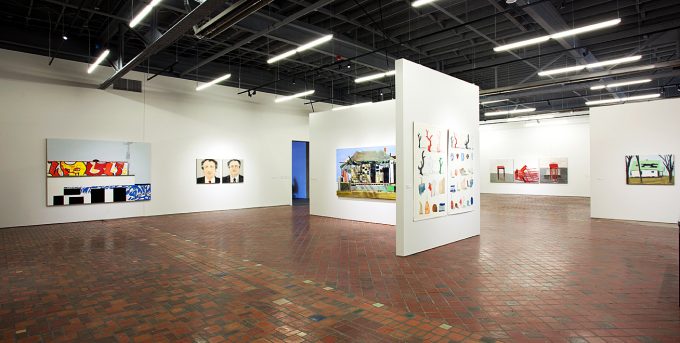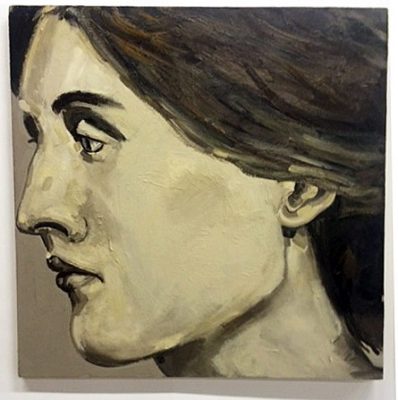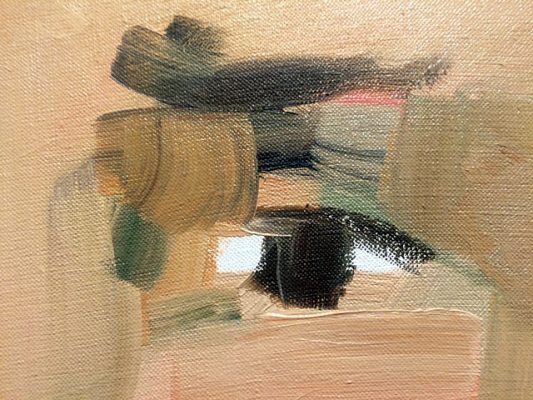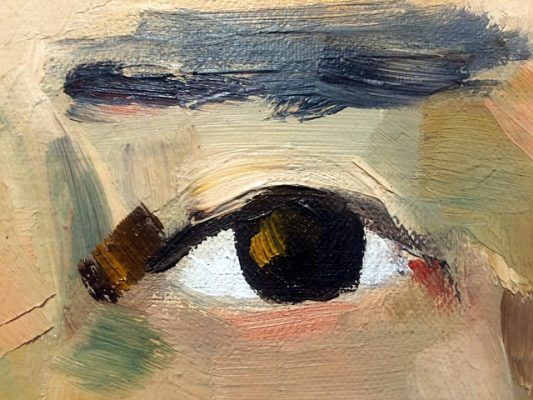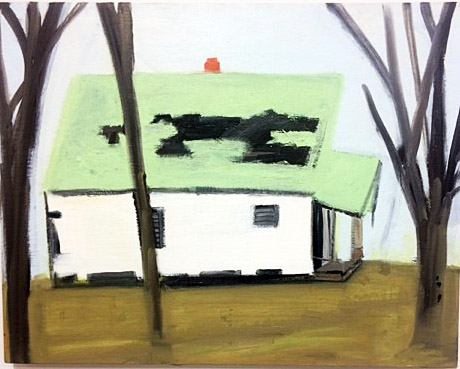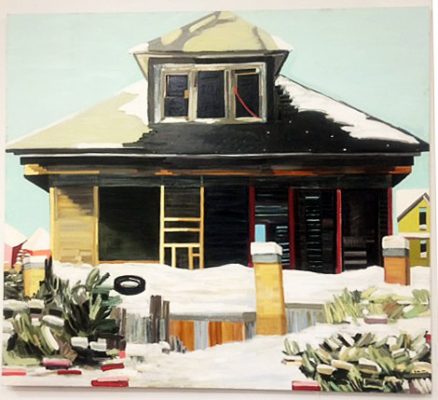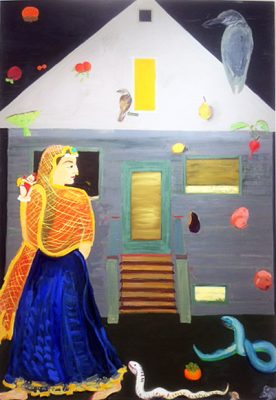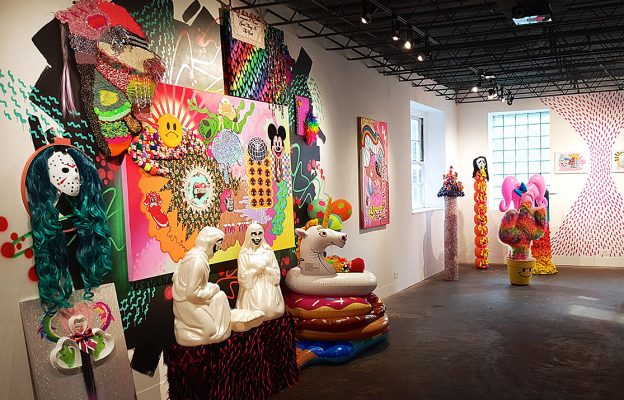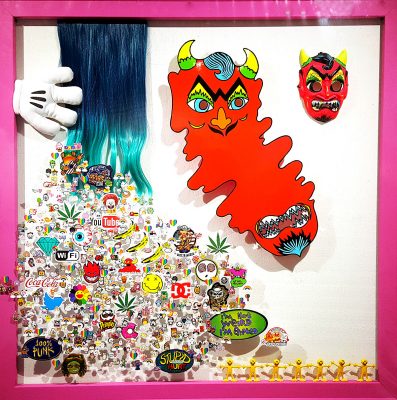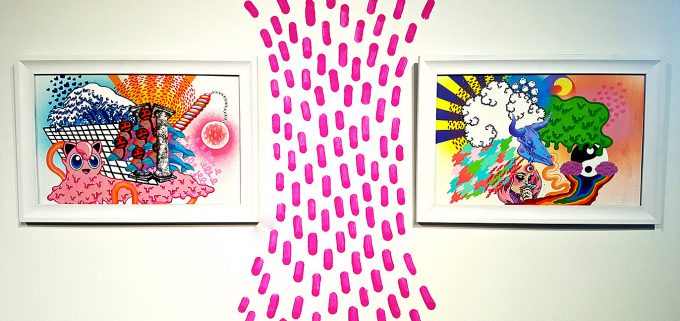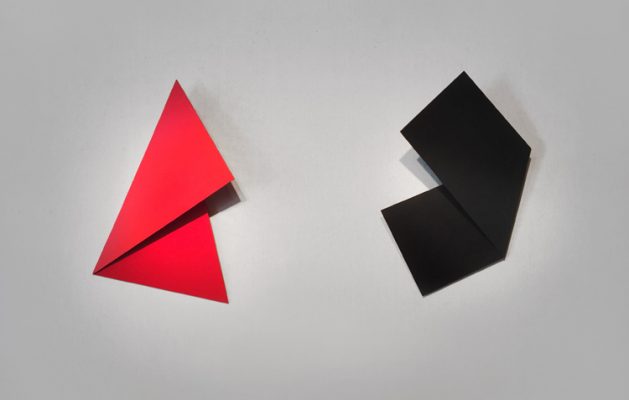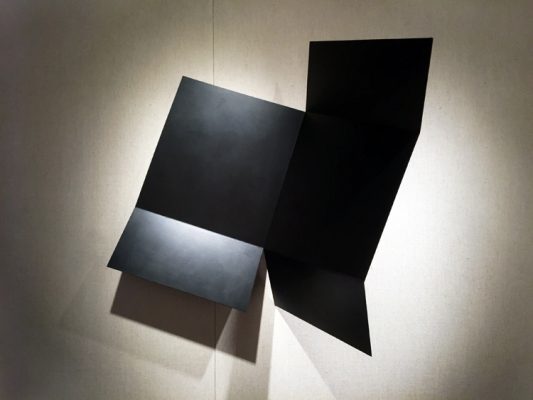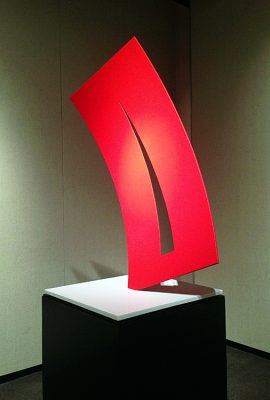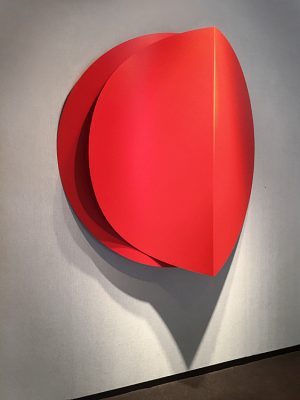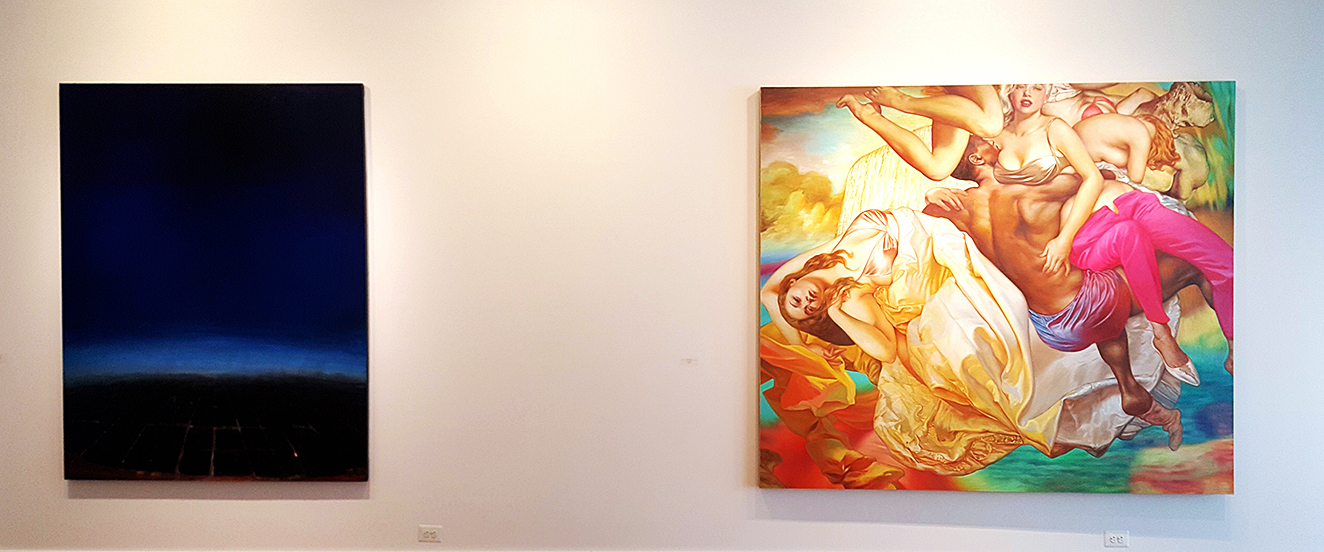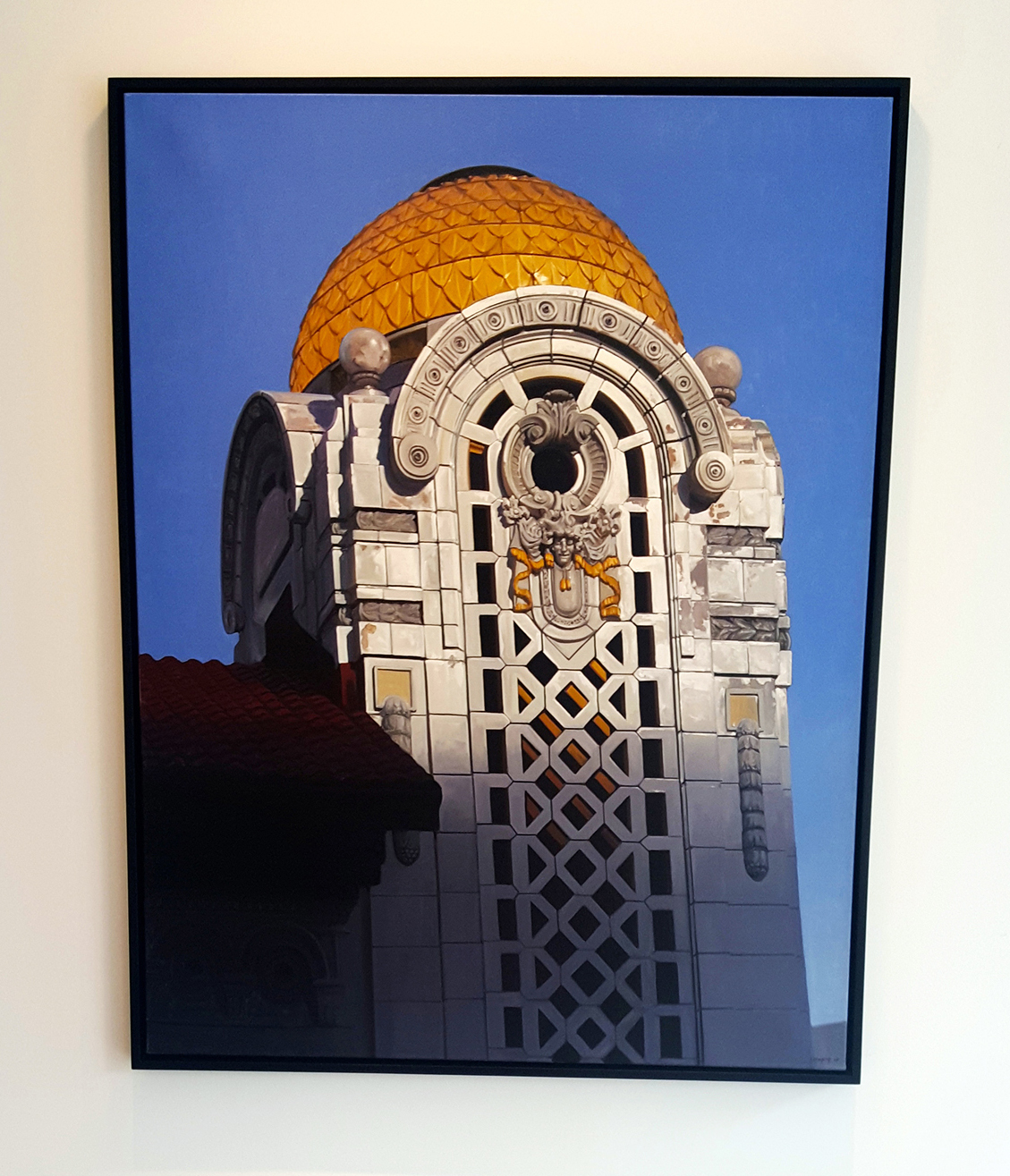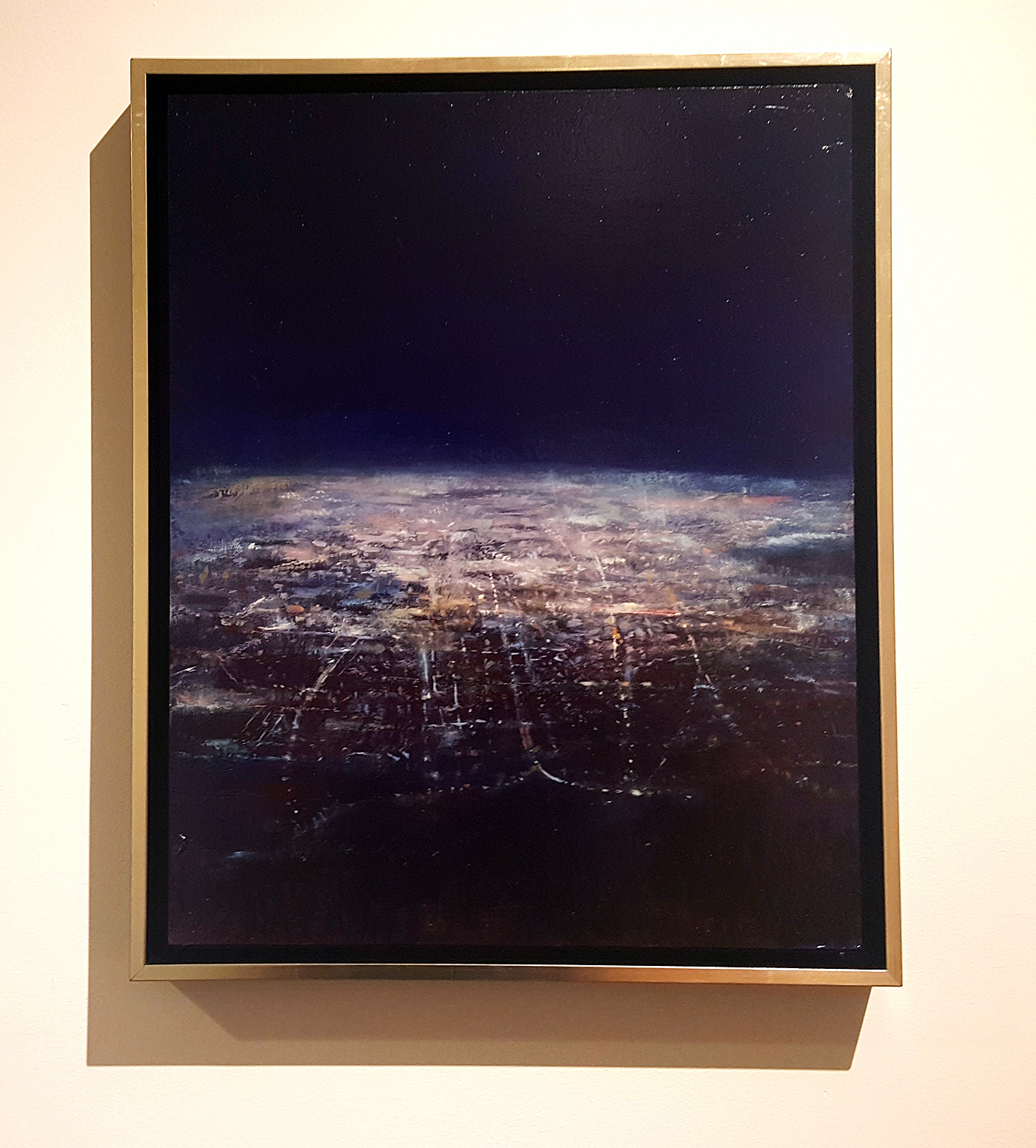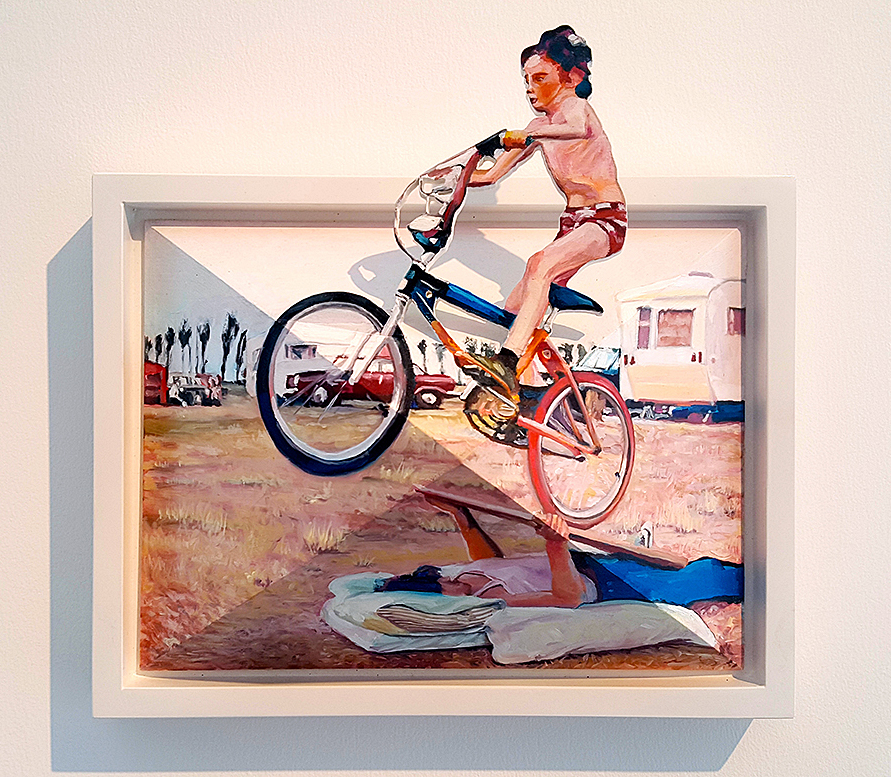Flint Institute of Arts Exhibition: Function, Form, Fantasy: Ceramics from the Robert and Deanna Harris Burger Collection
Ceramic work is one of the most ancient arts in the world, but in the United States and many parts of the world, has evolved over the last hundred years from what was once traditional functional craftwork to a high form of creative art that competes with painting and sculpture. This current diversity of ceramics has evolved dramatically as illustrated by the Burger Collection, now on display at Flint Institute of the Arts. Function, Form, Fantasy is currently on exhibit in three jointing galleries. The Function section has ceramic work that is traditional as it relates to its use: bowls, vases, plates, etc., Form moves away from being utilitarian, and experiments with shape, clay properties, and glaze, where as Fantasy uses a new freedom to create a narrative that could be comic, industrial, surreal, futuristic; You name it.
Function

Pippin Drysdale, b. 1943, Horizon Traces, 2010, Stoneware
Horizon Traces, was created by Pippin Drysdale, a ceramicist from Australia that creates the perfect shaped vessel while revealing fine lines of multiple colors. She says in her statement she is inspired by the desert sands.
Form

Adrian Arleo, b. 1960, Dreaming of Rama Teapot, 2001, Stoneware
The titled Rama, refers to an Indian king of lore, where the American artist Adrian Arleo, creates two human forms contrasting in size and glaze selection. Rama, the blue-tinted man, represents the perfect form of man, full of virtue, justice, and peace. The highly created textures assist in creating dimension and contrast to the forms.
Fantasy
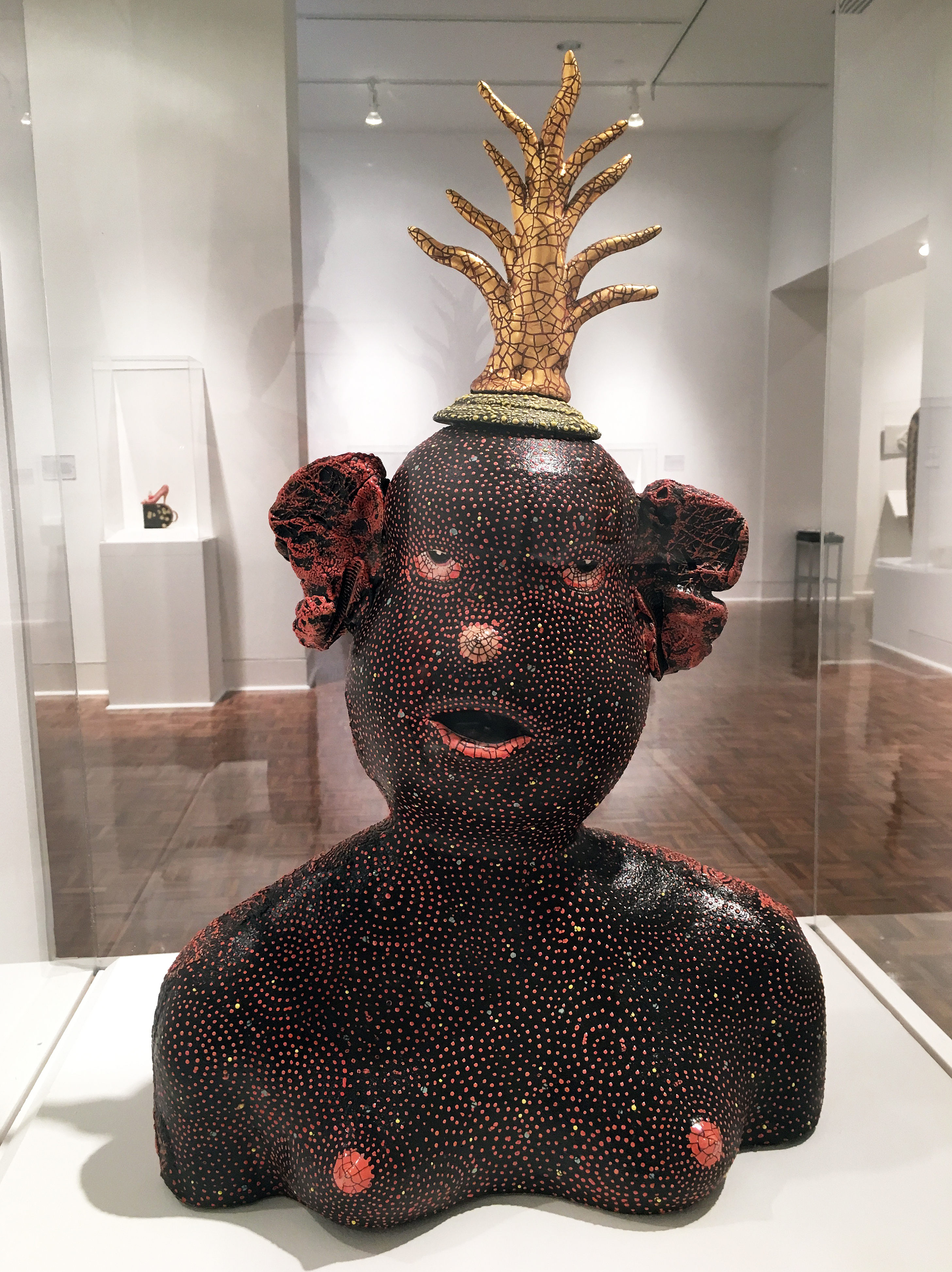
Andy Nasisse, b. 1946, Untitled, 2006, Stoneware
The American, Andy Naisise, creates Untitled, 2006 where he incorporates male and female, good and evil as opposites in this figurative piece of stoneware. In his statement, he says, “I think of figures as “part of a family of images that find their way through my hands and into the outer world.”
This exhibition offers the audience a view of recent ceramic work, beginning in the 1060’s to present day. Dr. Robert Burger and his wife have been collecting works of art since the 1970’s and have donated nearly 250 works of art to the FIA. Mrs. Burger has ties to Flint, having enjoyed ceramic classes at Flint Institute of Arts in her youth. You will find large and small works, simple and complex, by well-known artists that are elegant while thought-provoking works of clay that go a long way to blur the line between craft and fine art.
Moving Toward the Light
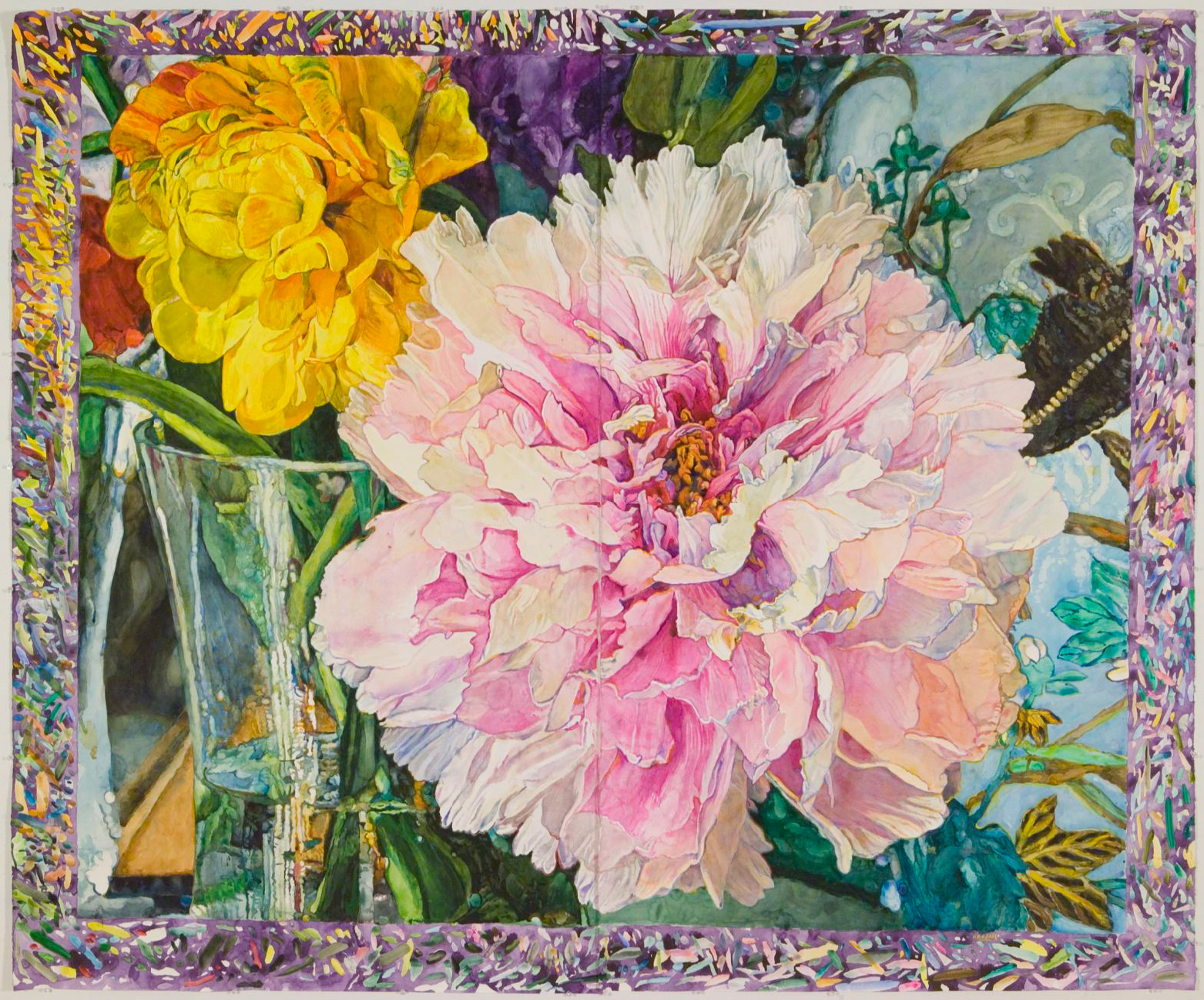
Joseph Raffael, American, b. 1933 New Cycle, 2009–10 Watercolor on paper 73 1/2 x 89 x inches Courtesy of Nancy Hoffman Gallery, New York, NY
On exhibition in the Graphics Gallery during these summer months, the artist Joseph Raffael has an exhibition of unusually large watercolor paintings, courtesy of the Nancy Hoffman Gallery, NYC, NY. This collection of eleven large watercolor paintings celebrates flora and fauna where Raffael captures a deep view of floral life, both in and out of focus. Growing up in Brooklyn, Raffael helped his mother with the fruits, vegetables, and flowers in her garden, where he came to regard the changing of seasons as a form of magic. He says “Seeing blossoms come alive is the same as watching a painting come forth out of the white space of a page or a canvas. The garden is another example of how one begins with nothing but seeds and the brown-colored space of the earth from which, little by little, the garden emerges.”
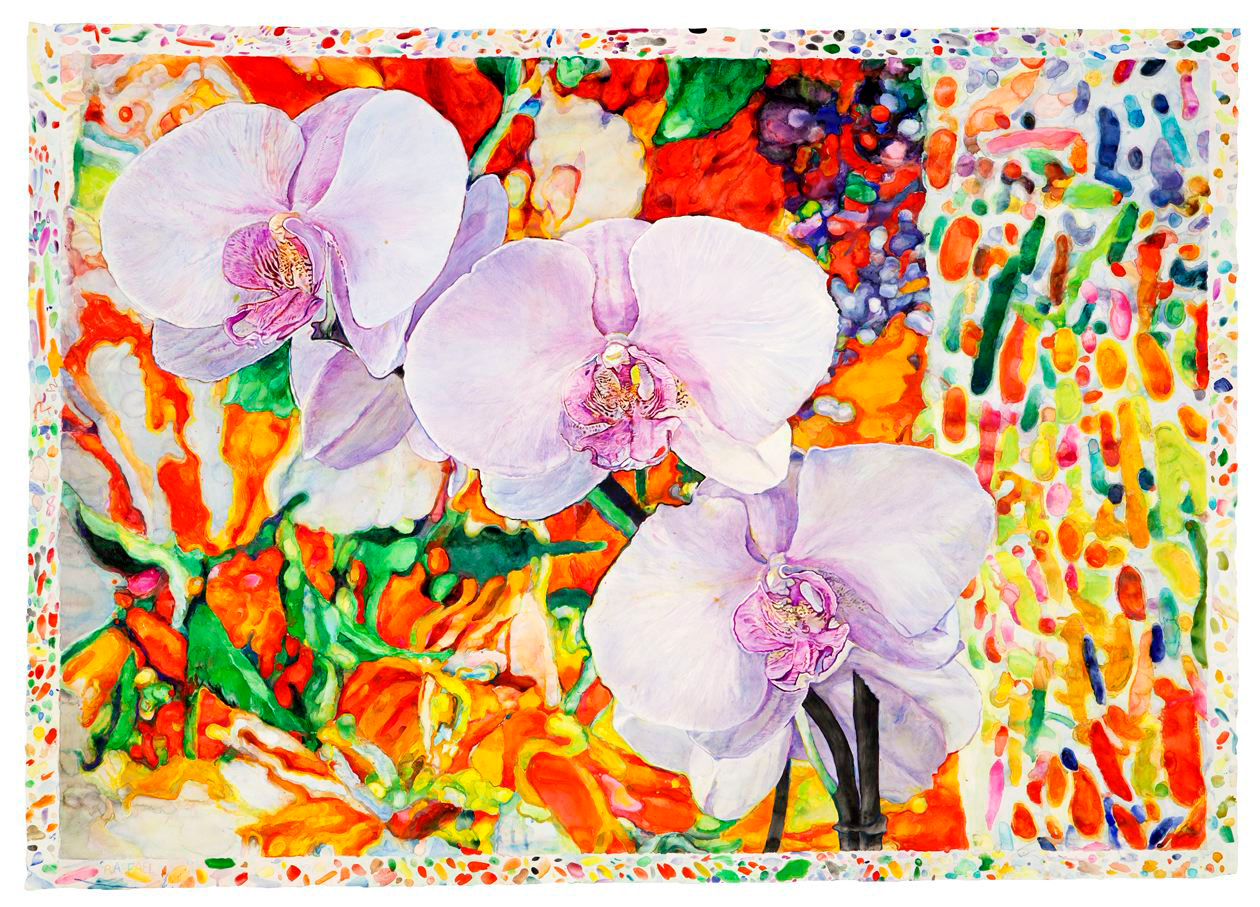
Joseph Raffael, American, b. 1933 Orchids Dream, 2013 Watercolor on paper 55 x 78 x inches Courtesy of Nancy Hoffman Gallery, New York, NY
The scale and intensity of these paintings provide the viewer with a combination of the representational subject matter set in a personal world of abstraction. His backgrounds and borders bring compositional strength to the composition and heighten the vision of watercolor. These large-scale works depict flowers, water, and fish swimming in in ornamental ponds. The artists say, “I don’t paint flowers; I paint energy.”
Those traveling north from Detroit this summer will find pleasure in stopping by for both exhibitions at Flint Institute of Arts, just a few blocks off I-475.
The Flint Institute of Arts is located in the Cultural Center Park just two blocks off I-475 between UM-Flint and Mott Community College. Hours are Mon-Wed & Fri, 12p-5p; Thu, 12p-9p; Sat, 10a-5p and Sun, 1p-5p. Admission to the exhibition is free to members and children under 12; Adults $7.00; Senior Citizens and Students $5.00. Saturdays are free thanks to First Merit Bank. For more information call (810) 234-1695 or visit www.flintarts.org.

